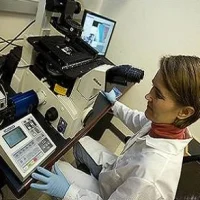A software program that can be easily integrated with current procedures allows surgeons to better distinguish between vertebrae during spinal surgery. The first clinical evaluation of the LevelCheck software, which won an award from the North American Spine Society for Spine Technology of the Year, indicate that it achieves 100 percent accuracy in only 26 seconds, offering an important tool to help to reduce the frequency of surgical errors related to operating on the wrong vertebra.
"Wrong-level spine surgery is never meant to happen," said Jeffrey Siewerdsen, PhD, a professor of biomedical engineering at Johns Hopkins and a member of the Armstrong Institute for Patient Safety and Quality. "But it happens nearly four times a week in the U.S.”
The spine is made up of repeating elements which resemble each other, making it difficult for surgeons to differentiate between the vertebrae. When surgeons operate on the wrong vertebra, the mistake is painful for patients and the healthcare system alike. Costly follow-up surgeries are often required, and the spine can become unstable and degenerate, according to co-author Jean-Paul Wolinsky, MD, an associate professor of neurosurgery and oncology at Johns Hopkins.
Typically, patients receive a diagnostic scan (CT or MRI) before a spinal surgery, which allows the surgeon to plan the operation. The procedure itself may not take place until days later, when the surgeon will count up from the tailbone or down from the skull as the patient is on the operating table, marking the problematic vertebra with thin metal pins that are visible in X-ray images.
Errors can occur because the preoperative scan is not visible in the X-ray image. Furthermore, some patients have extra or missing vertebrae or other anomalies that make it difficult for surgeons to identify the exact vertebra which needs surgical repair.
The LevelCheck software does not replace physician expertise, but offers decision support guidance, said Siewerdsen, who compares it with GPS. Using a standard desktop computer equipped with graphics processing capability, it aligns the patient’s 3D preoperative image with the 2D X-ray image, generating an X-ray image that shows the landmark pins and incorporates the planning information.
The research team analysed the preoperative and intraoperative images of 20 patients who underwent spinal surgery. They then simulated 10,000 surgeries by shifting the images, and measured the time it took for the software to correctly align the images 100 percent of the time. The result: 26 seconds.
"This study is the first to demonstrate that LevelCheck works with real patient images," Siewerdsen said. "It shows that the software can deal with challenges like changes in patient anatomy and the presence of surgical tools in the X-ray image.” A larger evaluation of the software, involving 200 patients and real-time testing, is underway.
"We can't eliminate the possibility of wrong-level surgeries," said Wolinsky, "but this is an additional level of security -- an independent check -- that works quickly within our standard surgical workflow. Although LevelCheck in its current form requires a preoperative CT scan for most patients, the benefit is well worth it.”
The findings have been published in a study that appears in the April 15 issue of Spine.
Source: Johns Hopkins Medicine
Image Credit: I-STAR Laboratory, Johns Hopkins University










